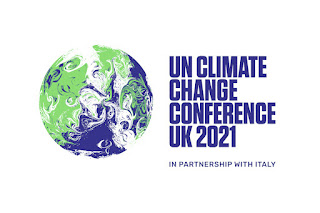Resolutions from COP 26 in bridging the Climate Finance gap.
COP 26 recently ended. It was one of the last major efforts the world is making to collectively achieve Net Zero Emissions by 2050. While the conference underwhelmed and failed to live up to expectations, due to the action (or inaction) of some major impact countries, a lot of significant resolutions and commitments were still made. Of particular importance to me is Climate Finance, and how the Developed World can aid Developing Nations in Climate Adaption and Transition Technologies.
Here are some resolutions agreed at COP 26 on Climate Finance and delivery:
1. Increasing the scale of climate finance: Developed countries remain fully committed to the goal of jointly mobilizing US$100 billion per year as soon as possible and through to 2025. In order to increase the scale of climate finance and meet the US$100 billion goal, developed countries will continue to steadily scale up climate finance by fulfilling their pledges. Those who have not yet made a pledge should follow suit and come forward with an ambitious climate finance commitment as soon as possible.
2. Increasing finance for adaptation: Article 9.4 of the Paris Agreement states that the provision of scaled-up financial resources should aim to achieve a balance between adaptation and mitigation. In this context, and noting the initiative of the United Nations Secretary General to increase the share of public finance for adaptation developed countries acknowledge the need for more adaptation finance and will therefore continue to scale up adaptation finance through 2025 to achieve a greater balance between mitigation and adaptation finance. In this regard, the G7 committed in June to scale up adaptation finance and a number of developed countries have already announced specific plans to significantly increase their adaptation finance. A practical approach to increasing adaptation funding is being pursued by the Informal Champion Group for Adaptation Finance. This group aims to increase the total share of climate finance spent on adaptation and resilience, encourage other developed countries to join in this effort and to advocate for improved access to adaptation finance. In addition to these efforts on balance, developed countries will continue to scale up efforts to target finance towards key developing country priorities.
3. Prioritizing grant-based finance for the poorest and most vulnerable: Different types of climate finance are used in response to the diverse needs and priorities of developing countries and their climate goals. In line with the Paris Agreement, developed countries recognize, in particular in the context of the COVID-19 pandemic, the need for public and grant-based resources particularly for those recipients with the least ability to mobilize domestic and other resources. Developed countries will hence prioritize grant-based resources, as part of a wide variety of financial instruments, to ensure there are adequate financial tools at the project level. Developed countries also acknowledge the specific need to support the most vulnerable countries and communities. Furthermore, developed countries recognise the critical role loan and equity financing as well as de-risking instruments play in mobilising private finance and therefore aim to continue to prioritize these instruments in line with development criteria.
4. Addressing barriers in accessing climate finance: Developed countries recognize that access to climate finance remains challenging for developing countries that lack sufficient capacities. In this context, it is essential that developing and developed countries continue to improve coherence, coordination and work closely together to find ways to improve access to climate finance through both bilateral and multilateral channels, including by continuing to improve enabling environments. Initiatives such as the NDC Partnership, Rocky Mountain Institute Climate Finance Access Network and the Taskforce on Access to Climate Finance are undertaking collaborative efforts to build in country capacity to access climate finance. The Adaptation Fund11 and the GCF already support direct access entities and developed countries will increase their efforts to improve direct access approaches, including through continued support for these funds to do more to enhance access. Developed countries will closely collaborate with both MDBs and the development finance institutions to develop concrete measures to accelerate the speed and efficiency of their processes. Developed countries also recognize the importance of continuing to channel bilateral climate finance in a way that builds long-term capacity and experience within countries. Furthermore, the Taskforce on Access to Climate Finance led by the UK and Fiji provides an opportunity to address the barriers to accessing climate finance and align investment behind vulnerable and developing countries’ plans and priorities.
5. Assessing and building on lessons learned: Developed countries will undertake a thorough analysis of climate finance to draw lessons learned to further understand the challenges in reaching the US$100 billion goal, in order to build on past experience and improve in the future. The recipient perspective is also key in order to identify ways to improve the effectiveness of future climate finance in reaching the goals of the Paris Agreement. Developed countries look forward to engaging constructively with developing countries in this regard.
Apart from these resolutions and pledges, from an ethical and moralistic point of view, Developed Countries utilized and harnessed the power of fossil fuels to scale up and improve their economies and standards of living, something developing countries would now find more difficult to do so. Developing nations also contain the highest amount of populace who would feel the brunt of the Climate Crises if left unabated. It would certainly be to the benefit of the entire planet if more measures could be put in place to assist Developing countries transition effectively financially to a Carbon Neutral, and if possible a Carbon Negative Economy.
Thank you very much.
Oriola Odutoye
oduoriola@gmail.com
References:
https://ukcop26.org/cop26-goals/finance/
https://www.ipcc.ch/documentation/




Comments
Post a Comment